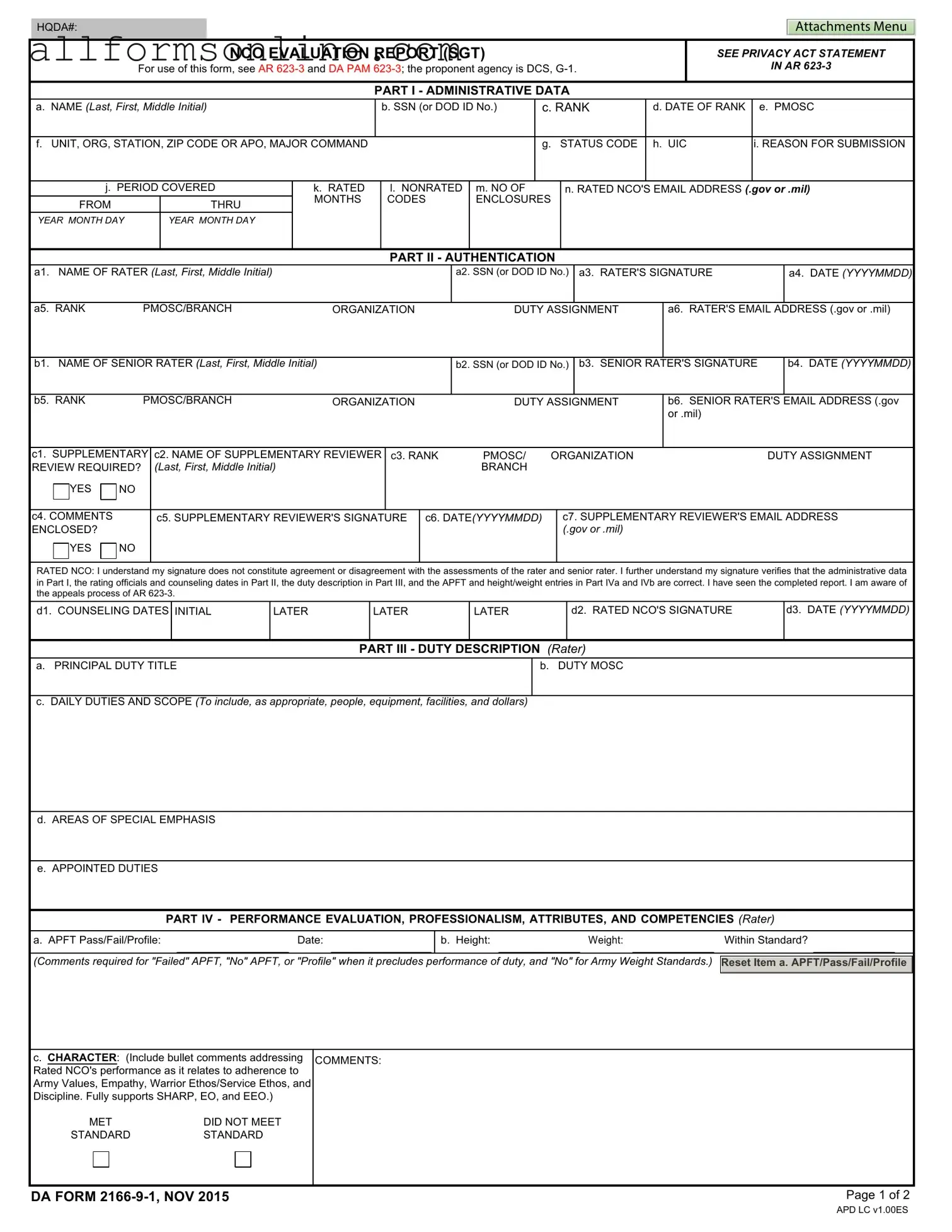What is the purpose of the DA 2166 9 1 form?
The DA 2166 9 1 form is used to evaluate the performance of Non-Commissioned Officers (NCOs) at the rank of Sergeant. It serves as an official record of an NCO's performance, potential, and professional development. This evaluation is critical for career progression, promotions, and assignments within the Army.
Who is responsible for completing the DA 2166 9 1 form?
The form must be completed by the rater, who is typically the immediate supervisor of the NCO being evaluated. The senior rater, usually a higher-ranking officer, also plays a role in the evaluation process by providing an overall assessment of the NCO's potential. The rated NCO must also sign the form to acknowledge the evaluation.
What information is required in Part I of the DA 2166 9 1 form?
Part I requires administrative data such as the NCO's name, Social Security Number or DOD ID number, rank, date of rank, unit information, and the reason for submission. It also includes the period covered by the evaluation and the rated NCO's email address. Accurate completion of this section is essential for proper identification and processing.
What does the rater assess in Part IV of the DA 2166 9 1 form?
In Part IV, the rater evaluates the NCO's performance across several categories, including character, presence, intellect, leadership, development, and achievement. Each category is rated as "MET" or "DID NOT MEET STANDARD," with comments required for clarity. This section provides a comprehensive overview of the NCO's professional attributes and competencies.
How does the senior rater contribute to the evaluation process?
The senior rater provides an overall assessment of the rated NCO's potential compared to others in the same grade. This assessment is crucial for determining the NCO's readiness for promotion and future assignments. The senior rater selects a box indicating the NCO's potential and may also list relevant assignments to support their evaluation.
What should a rated NCO understand when signing the form?
By signing the DA 2166 9 1 form, the rated NCO acknowledges that they have reviewed the evaluation and that the administrative data is correct. The signature does not imply agreement or disagreement with the assessment. It is also important for the NCO to be aware of the appeals process as outlined in AR 623-3.
What are the consequences of not submitting the DA 2166 9 1 form?
Failure to submit the DA 2166 9 1 form can have serious implications for an NCO's career. Without this evaluation, the NCO may miss opportunities for promotion, assignment, or professional development. Timely submission is essential to ensure that the NCO's performance is accurately reflected and considered in future career decisions.
